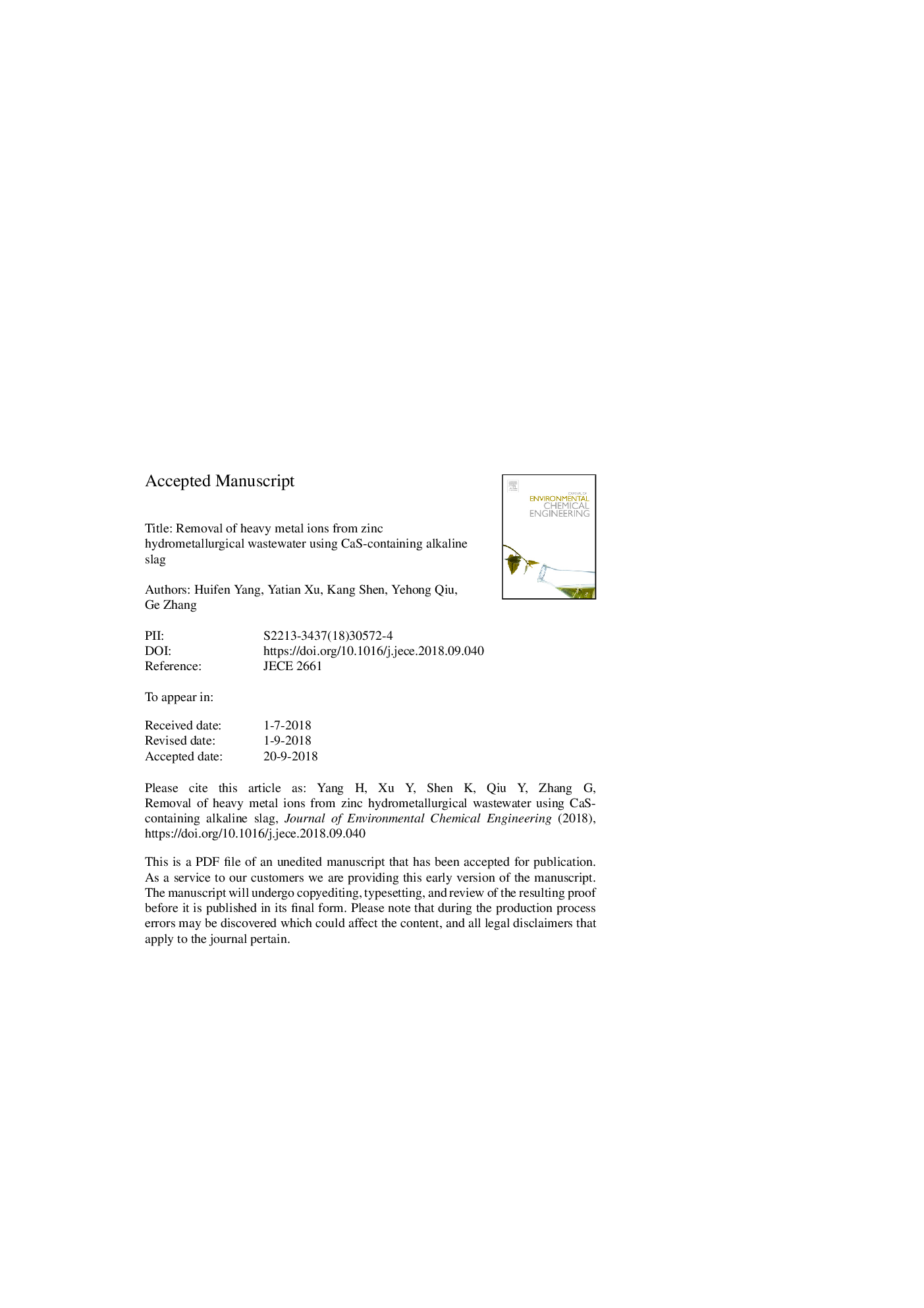| Article ID | Journal | Published Year | Pages | File Type |
|---|---|---|---|---|
| 11263713 | Journal of Environmental Chemical Engineering | 2018 | 17 Pages |
Abstract
The CaS-containing alkaline slag (CCAS), discharged after recovering valuable metals from high-surfur residues in zinc hydrometallurgical plants, was used to remove heavy metal ions from acid wastewater produced in zinc hydrometallurgical process. The CCAS was capable of effectivly removing aqueous Pb2+ and Cd2+ ions with the neutralization of acid wastewaters. As the CCAS usage was 30âg/L for Pb2+ and 45âg/L for Cd2+ containing synthetic solutions, the removal rate of Pb2+ and Cd2+ reached 99.13% and 99.87% with the equilibrium pH of 10.81 and 10.85, respectively. The Pb2+ and Cd2+ ions were removed with the CCAS by generating metal sulfides, hydroxides and aluminosilicates. The treatment of real acid wastewater from zinc hydrometallurgical process was also investigated with the CCAS. As the CCAS usage was 160âg/L, the concentrations of Cd2+, Pb2+, As3+ and Zn2+ ions were reduced to 0.102âmg/L, 0.09âmg/L, 0.003âmg/L and 0.0193âmg/L respectively, and the equilibrium pH of treated wastewater was increased from around 2.0 to 11.30. For the treatment of real wastewater, heavy metals were proved to be removed by forming Cd2SO4(OH)2, Cd3Al2Si3O12, PbSO4 and CuS on CCAS surface. The results revealed that it was feasible for the CCAS to treat real acid wastewater discharged from zinc hydrometallurgical process. However, the used CCAS must be stored in specialzed landfill because the leaching concentration of Cd2+ reached 0.107âmg/L, which was higher than the Cd2+ emission standard of 0.05âmg/L.
Related Topics
Physical Sciences and Engineering
Chemical Engineering
Chemical Engineering (General)
Authors
Huifen Yang, Yatian Xu, Kang Shen, Yehong Qiu, Ge Zhang,
